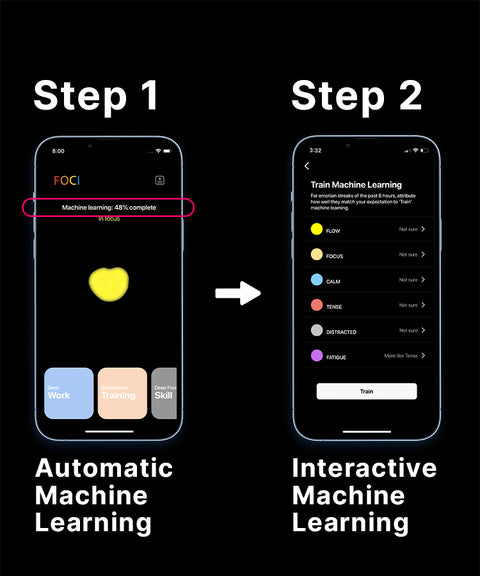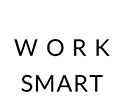
Update: Broad strokes view of using FOCI
Dear friends,
We are grateful to @Michael for highlighting problems that we haven’t covered well and, we would like to use the opportunity to share a broad strokes view of fully utilizing FOCI. (Michael’s original message is in the Kickstarter comments section and we have excerpted).
Training machine learning best practice
"does machine learning always need to be on? If I turn it off after training is done will it impact anything?”
Simple answer:
After 'automatic machine learning' is complete, calibrate it with 'interactive machine learning’.
(And machine learning can’t be switched off for FOCI to function.)

Complex answer:
Our physiological changes in a periodic manner and it is rarely static, and it requires machine learning to adapt to these changes. In other words, machine learning has to continuously weigh in these changes in your physiology in view of your 'automatic machine learning’ profile and hopefully 'interactive machine learning’ profile. So it is like hitting moving targets.
Advanced users would intuit the hitting moving targets analogy and adjust 'interactive machine learning’ periodically to help machine learning narrow the targets.
For example, recently Cambridge hit its all time high temperature record. This heatwave's impact on my physiology is happening too fast for FOCI to adapt, so I used 'interactive machine learning’ to help FOCI quickly adapt.
Another example, recently a colleague of mine recovered from a bad flu, her FOCI data is no longer reflective no longer reflects her states. Physiology after a flu is very different from before pathogenesis. Had she not used 'interactive machine learning’, FOCI would need at least half a week to adapt to her again.
General usage best practice
"Trained to 100%
Use deep work to measure my focus during my work sessions.
Is the next steps for me to do all the biofeedback training?
After that, have I exhausted all the features?”
Simple answer:
After training machine learning, start measuring productivity work to get intuition of your work performance. Then proceed to master biofeedback to get into flow reproducibility.
(Biofeedback level 4 is the ultimate feature)
Complex answer:
Flow is the ultimate productive state, and online-gurus would give readers a lot of anecdotal advice to get in flow and you may find much of these instructions hard to follow. However, flow is also a physiological state that you can get in even when you are working on something far beyond your current capacity (unfavorable to induce natural flow), you can still induce this state with the right technique and training.
Here is a 3 part guide to understand flow:
1. Breathing and peak mental performance
2. Mindfulness and peak mental performance
3. Self control and peak mental performance
Emma, who joined our team recently, when she first started using FOCI, got around 2hours of deep focus a day and she rarely got any flow orbs. However, it wasn’t long for her to realize that people around her get around double the amount of deep focus a day (4-5h), and on average 1.5 hours of flow. So this tacit peer pressure motivated her to tackle biofeedback training, and it took her around 2 weeks to be able to match up the team average. And on occasions where she forgets to bring her headphones to use biofeedback, her performance drops by as much as half.
It is relatively easy to get a 50 minute flow orb using biofeedback level 4 and almost impossible without it.
We know it is hard to get a feeling of how powerful it is, however, with the upcoming productivity community feature. You will be able to see how advanced users can get 50 minute flow, in real time. Hopefully, with that knowledge, we could finally convince you to master biofeedback level 4 or should we say - master flow.
Best wishes,
Mick and the FOCI team


